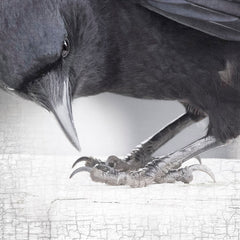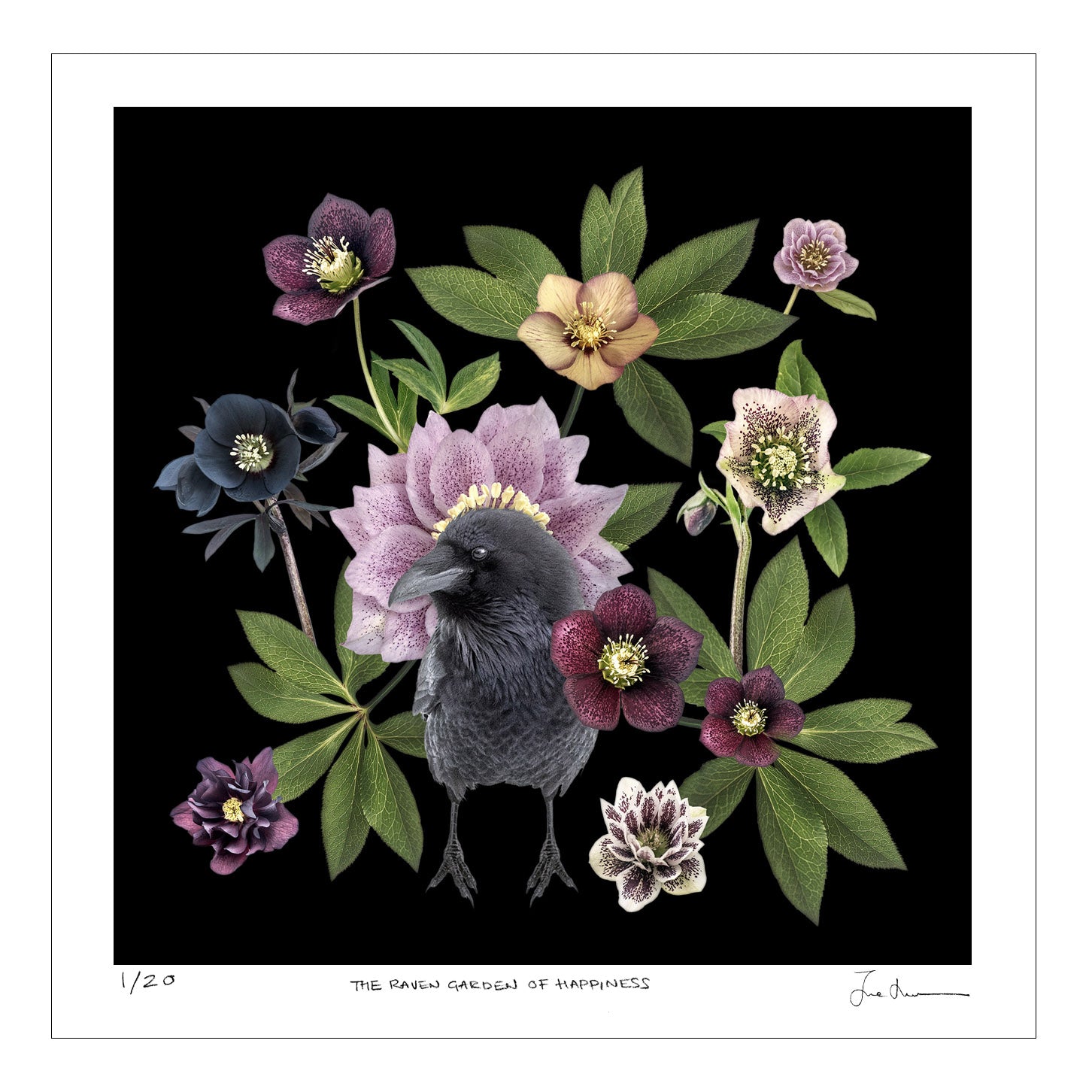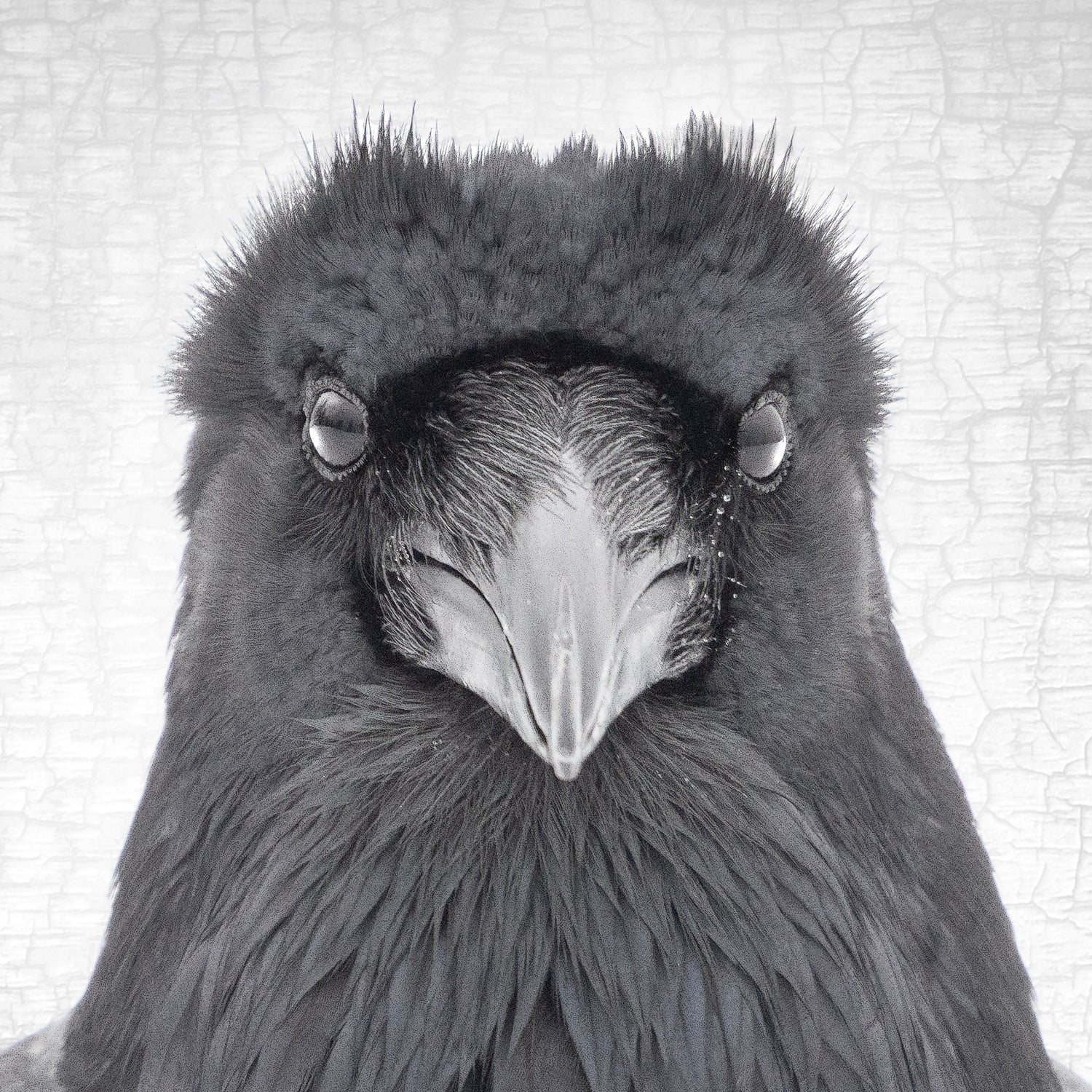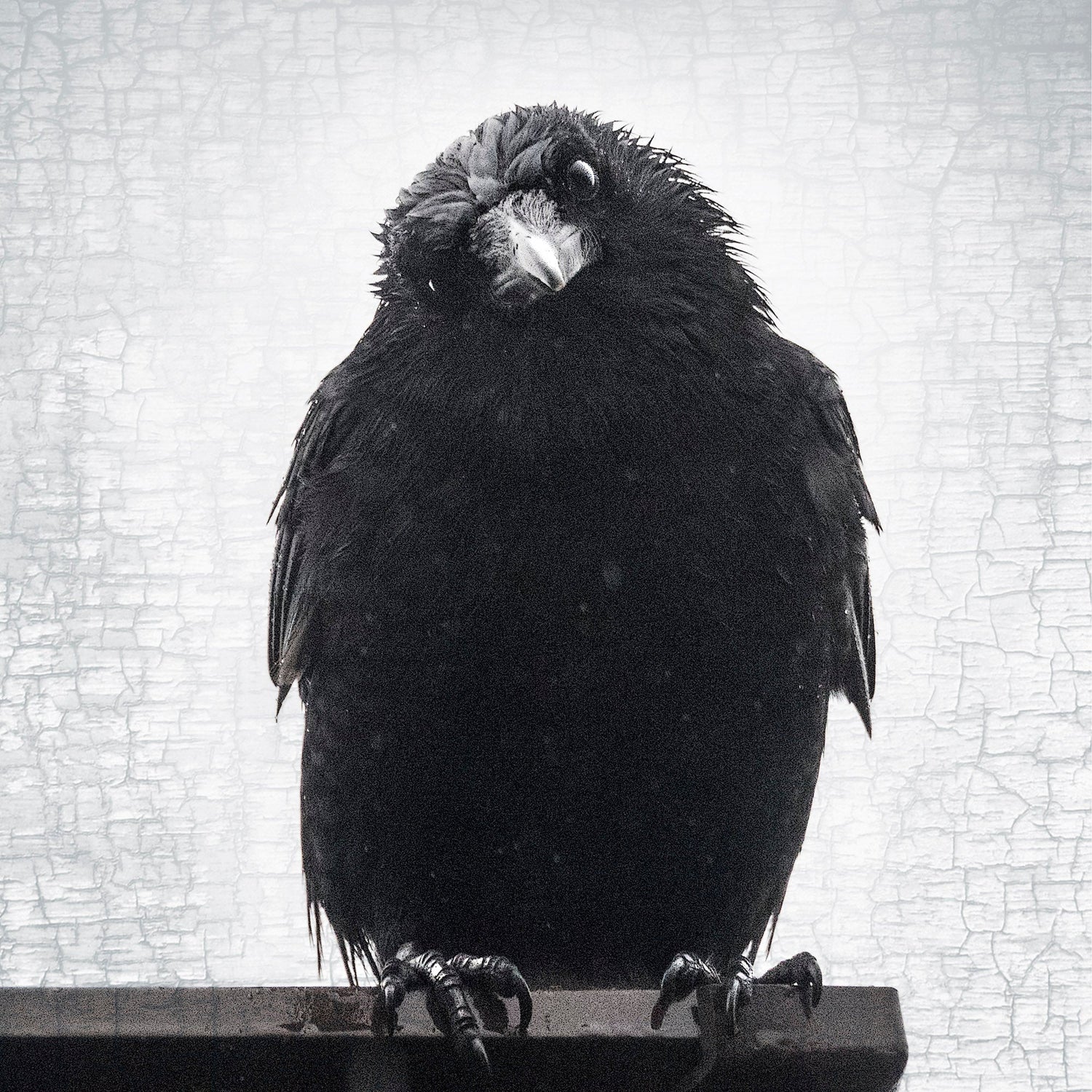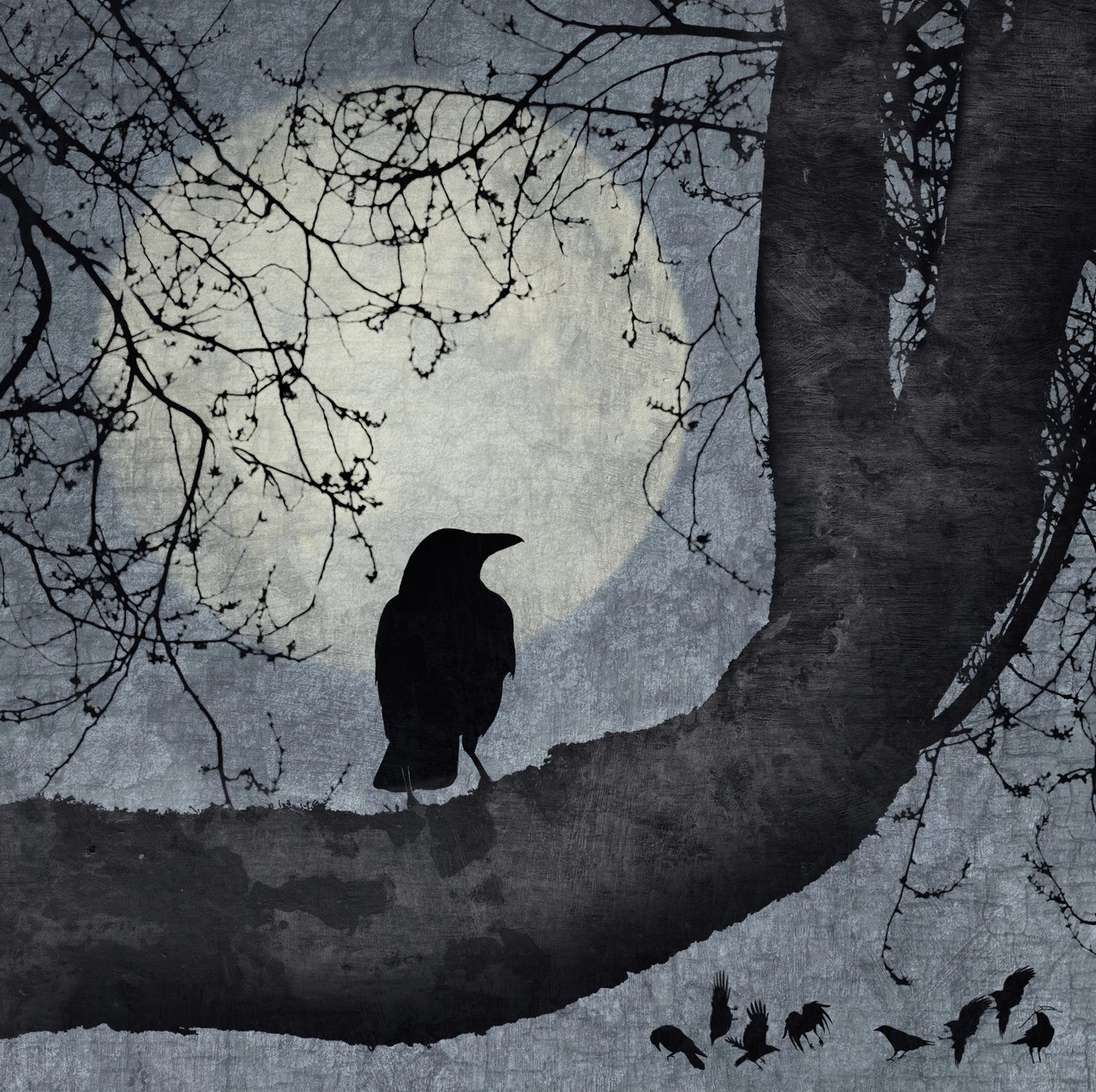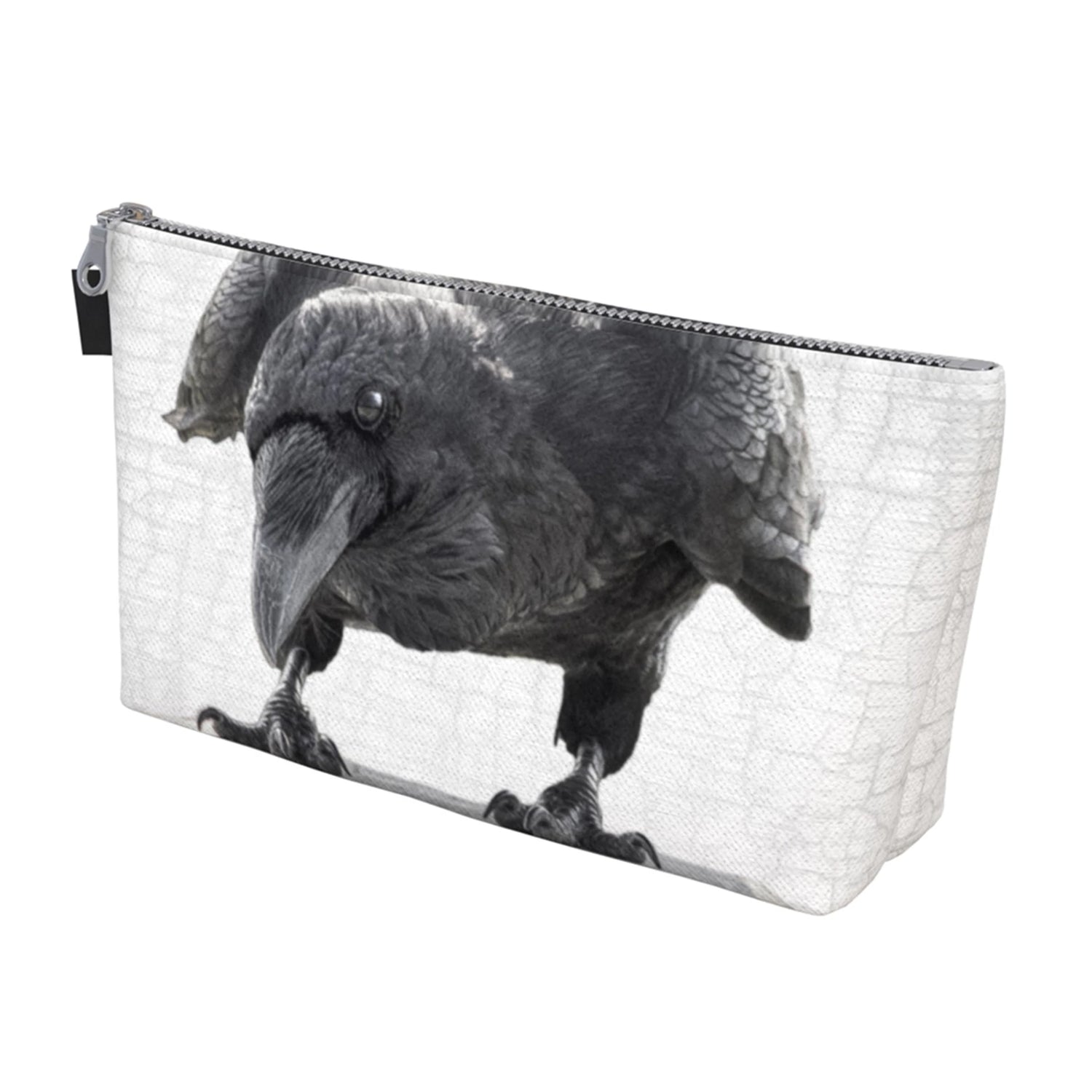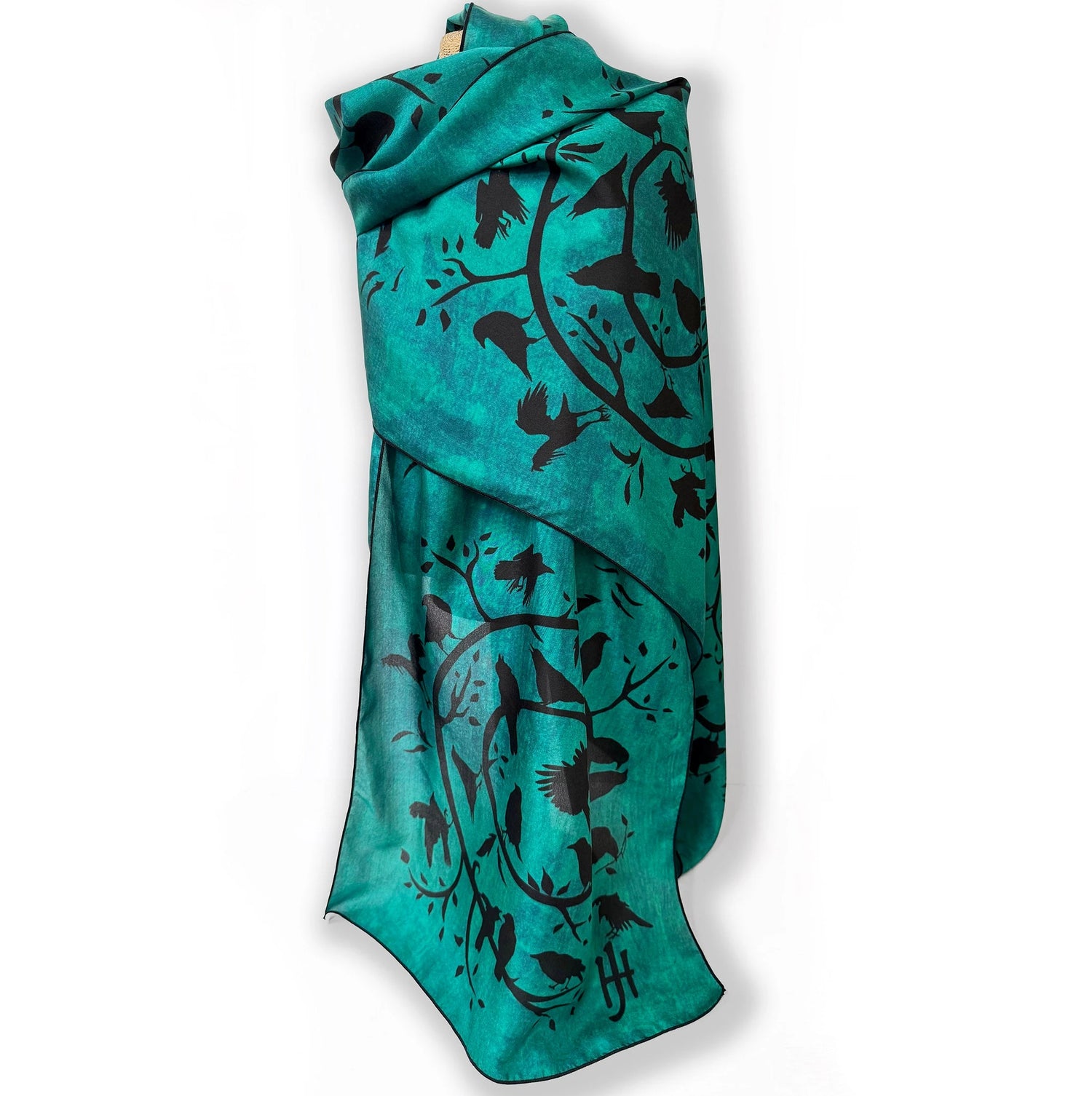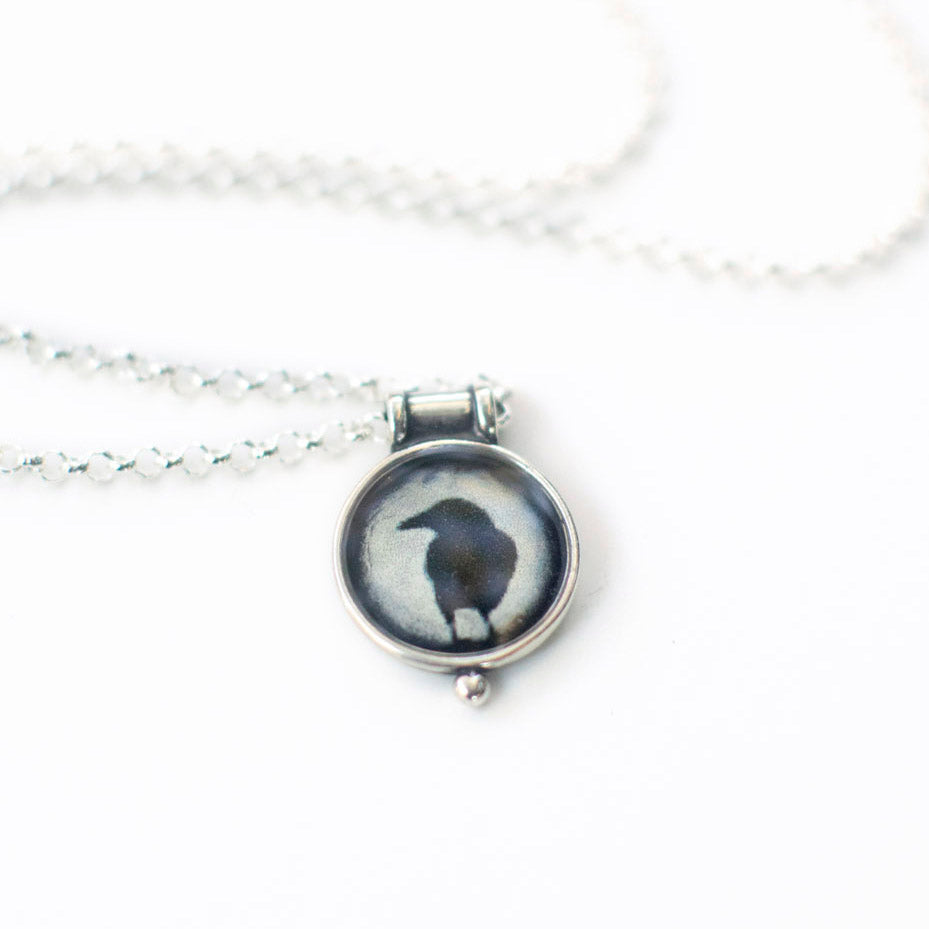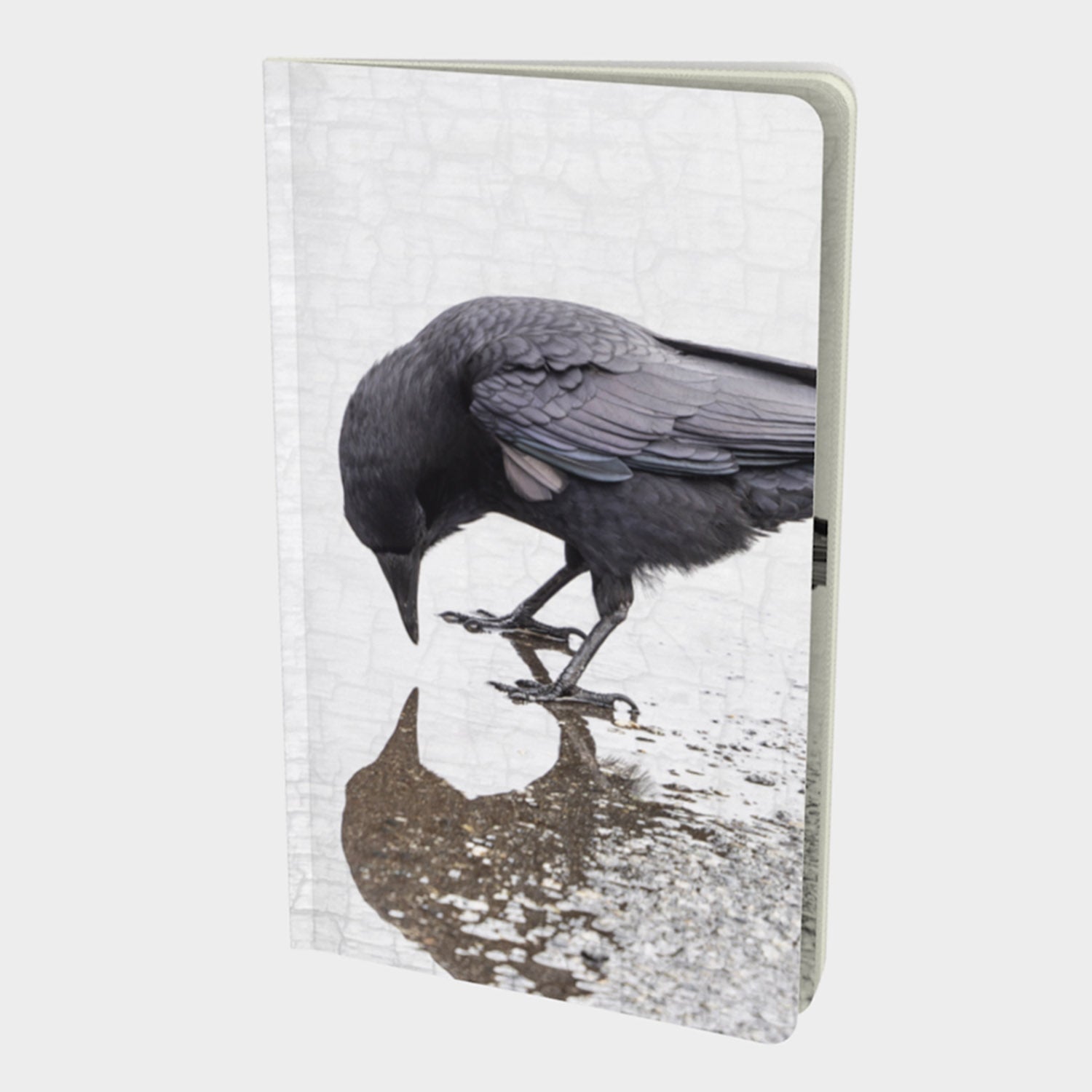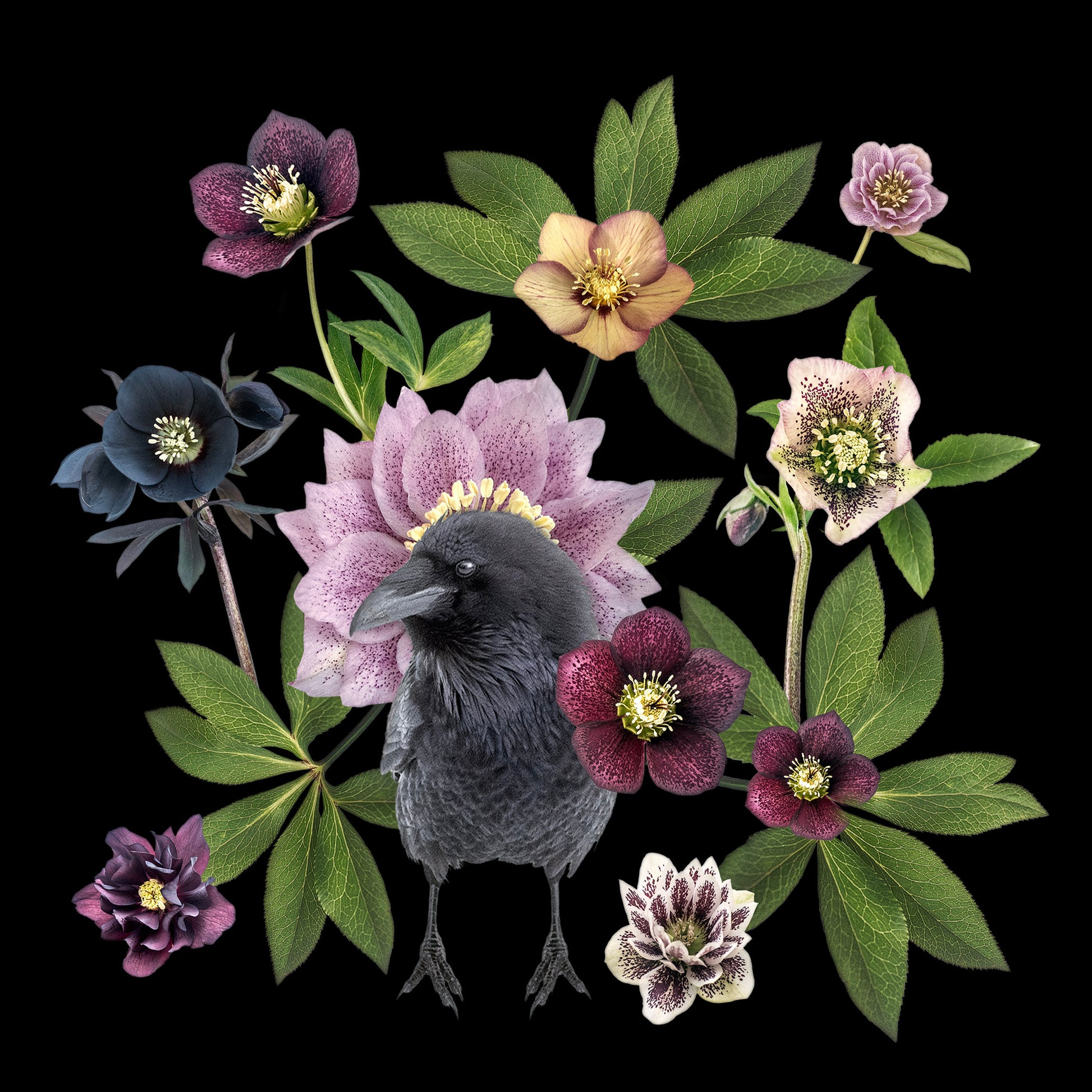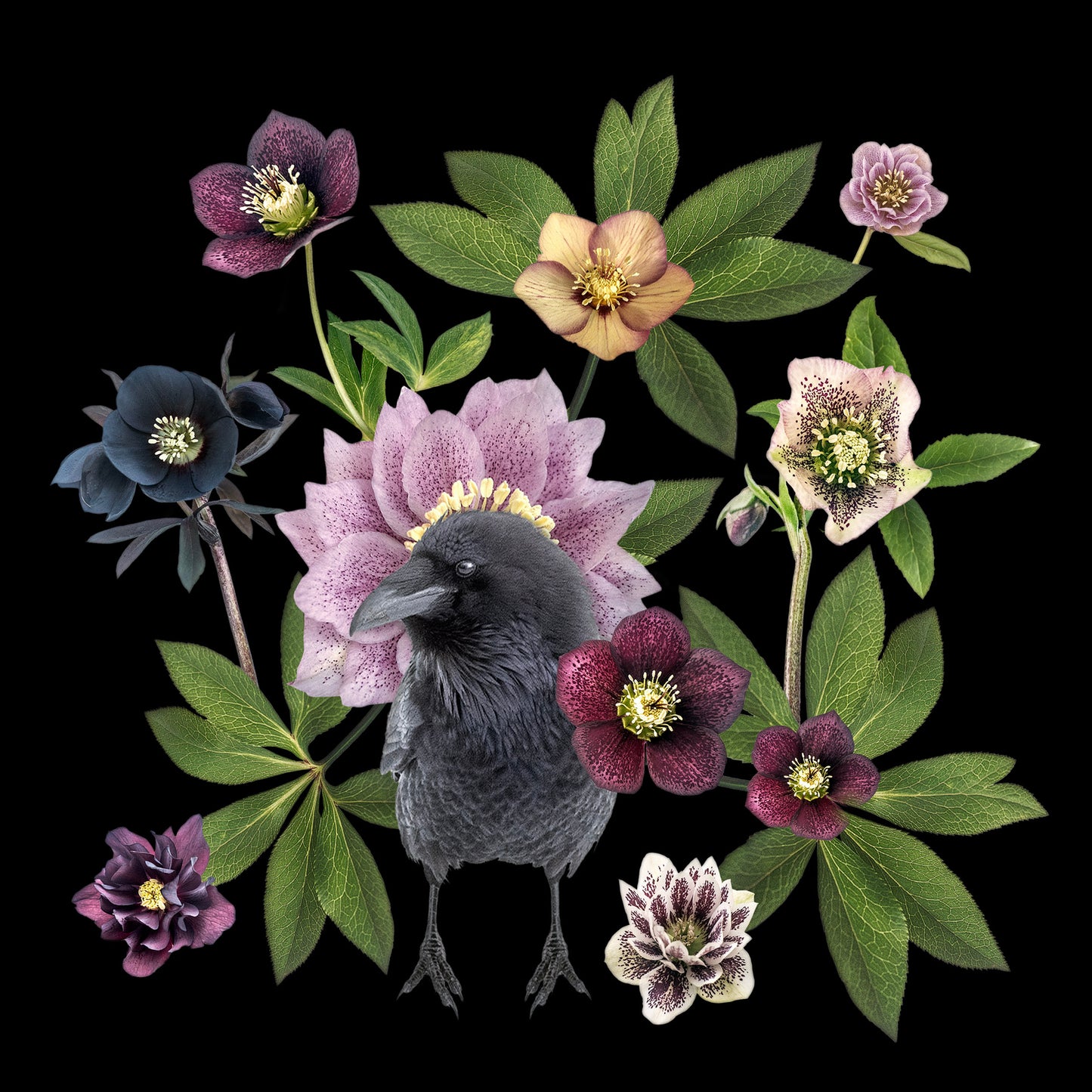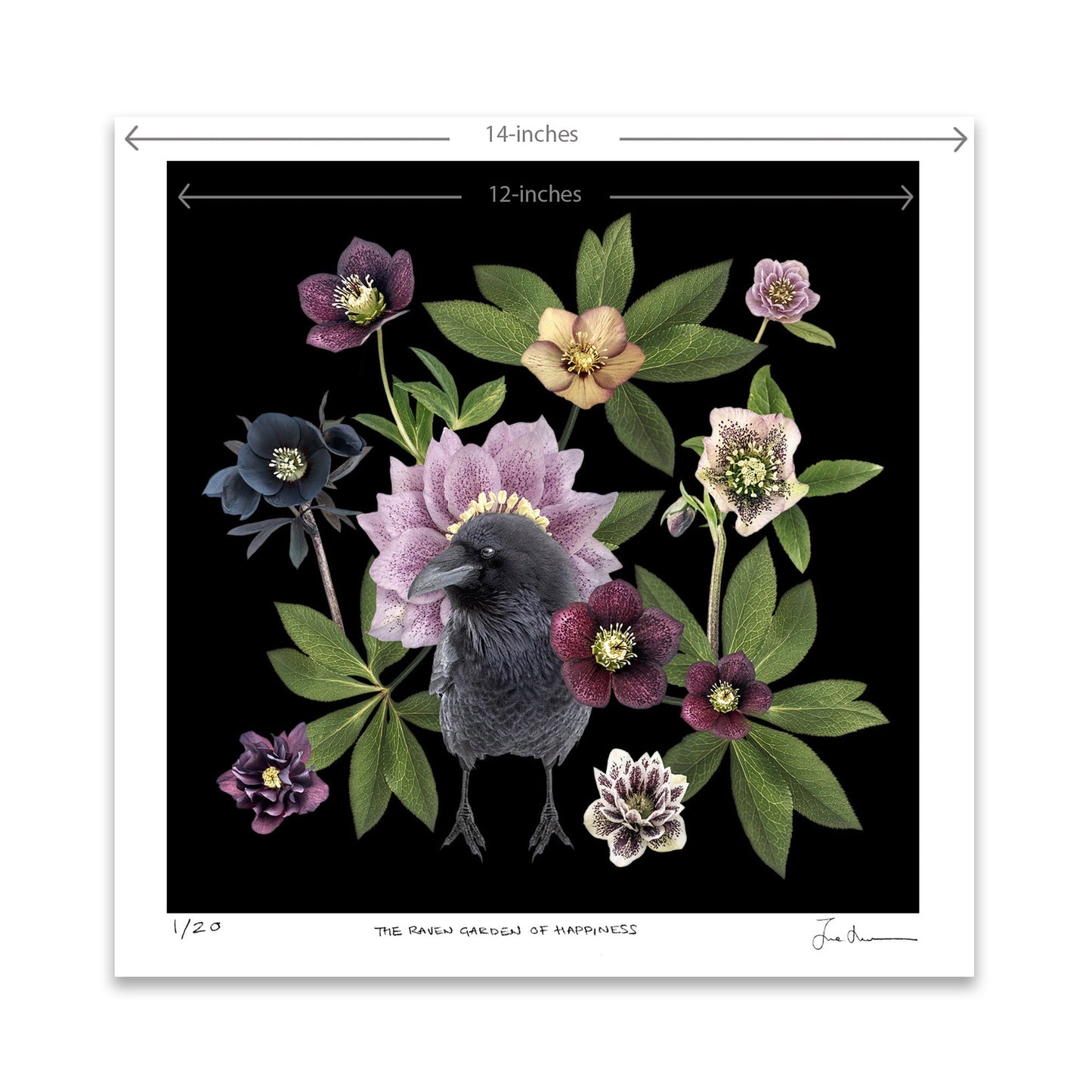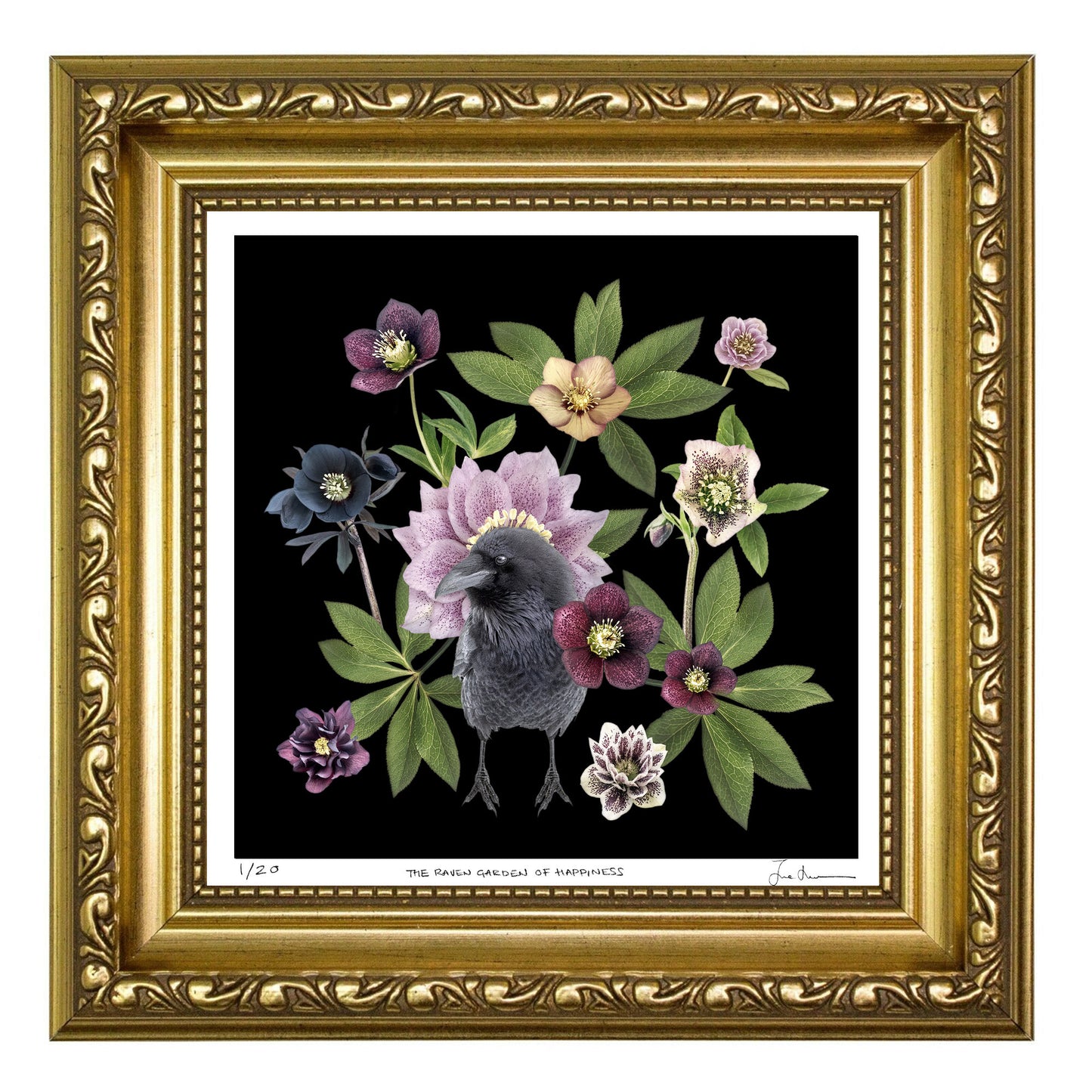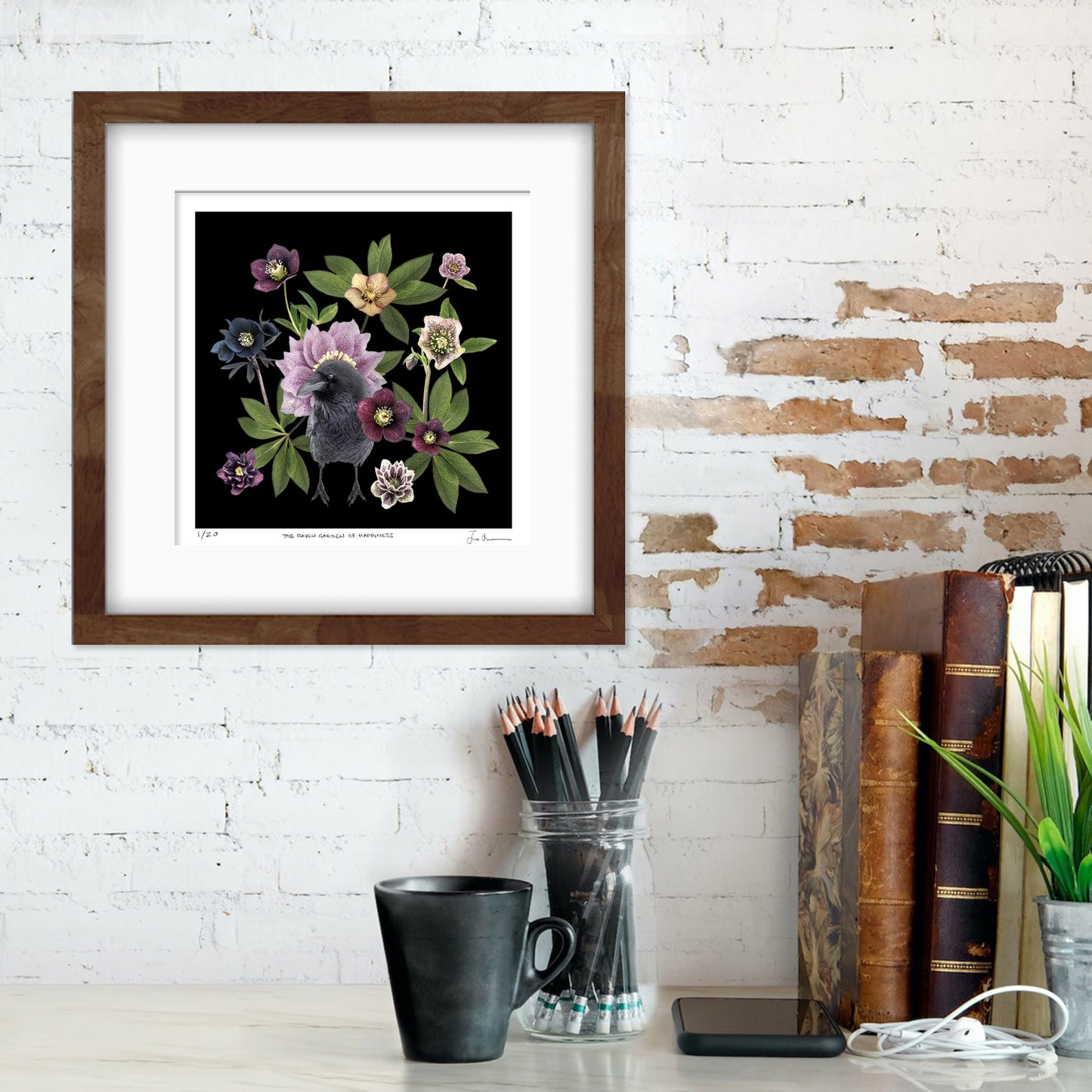Crow versus Raven: Easy Ways to Tell the Difference
How to Tell a Raven from a Crow

Corvid Identification Flying, Up Close, and From a Distance
This post is based on an interview with June Hunter, a Vancouver-based photographer whose art features crows, ravens, and many other birds of the West Coast.
In this post, we're going to boost your bird identification skills and compare common ravens (Corvus corax) with common crows (Corvus brachyrhynchos). We'll go over how you can tell the difference between these two black birds and what makes each bird uniquely wonderful.
For simplicity, we'll compare the American crow to the common raven in this post. While crows around the world are similar, the size and vocalizations of crows in Europe, the Middle East, Africa and Asia are not identical to those of American crows.

Ravens vs Crows
Both as black as the midnight sky, these two Corvids may look like identical twins at first glance. But peer closer, and you'll find they have many differences. While both crows and ravens are intelligent birds, they're not identical.
| Aspect | Crows | Ravens |
|---|---|---|
| Size | Smaller body and wingspan | Larger body and wingspan |
| Beak | Slimmer beak | Heavier, thicker beak |
| Feathers | Smoother, less shaggy feathers | Shaggier, longer throat feathers |
| Tail Shape | Fan-shaped tail | Wedge-shaped tail |
| Wings | Shorter, rounder wings | Longer, thinner wings |
| Feet | Smaller, more nimble feet | Larger, stronger feet |
| Vocalizations | Distinct 'caw' sound | Deeper, more varied sounds |
| Flight Style | Agile, lower altitude flight | Soaring, high altitude flight |
| Social Behavior | More communal, large groups | More solitary or in pairs |
| Habitat | Adaptable, including urban areas | Prefers wilder, open areas |
| Intelligence | Highly intelligent, tool usage | Slightly higher intelligence |
| Diet | Varied, omnivorous | Scavengers, larger prey |
How to Tell the Difference Between a Crow and a Raven
If you've spent time around crows and ravens, the easiest way to distinguish between them is by their sound. The common raven has a unique, hollow call that you can often hear in forests and sometimes in cities. Whereas crow calls are a sharp caw that most city dwellers recognize. When nature photographer June Hunter hears a raven, even from far away, she can instantly recognize it.
However, if the black bird in question isn't producing any sounds, then size is the easiest way to tell the difference between a crow and a raven.
Ravens are significantly larger than crows, which is evident when you see them side by side. People often remark on the size difference, especially when encountering ravens in natural settings like mountains. Ravens are roughly the size of a red-tailed hawk. Crows, on the other hand, are smaller — about the size of a pigeon.
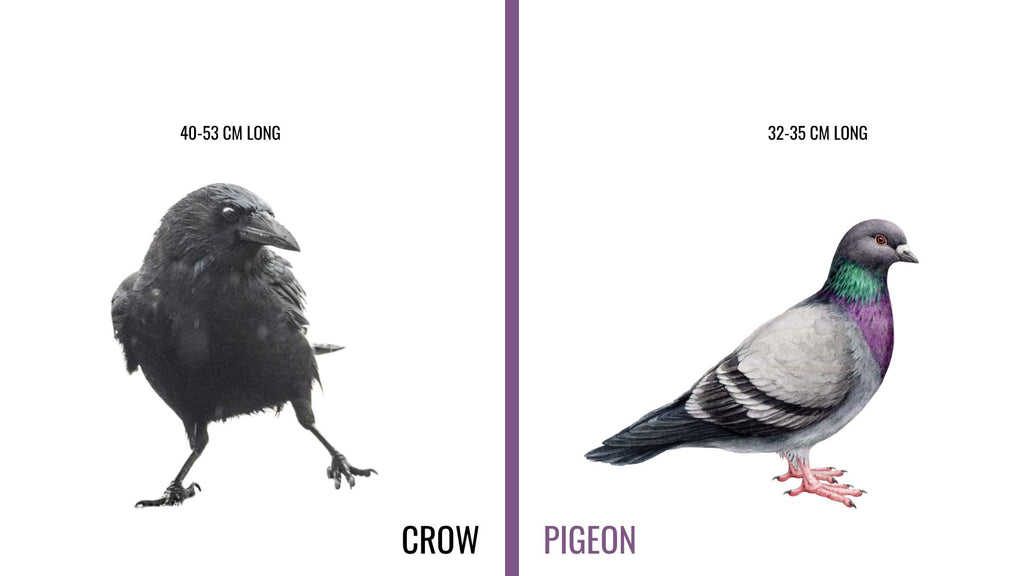
In Centimeters:
Ravens are significantly larger than crows in length and wingspan. On average, a raven measures about 63 cm long, while a crow measures about 45 cm long. Thus, there is an approximate difference in length of 18 cm. Similarly, a raven's wingspan is approximately 120 cm, while a crow's is around 100 cm, making a difference of 20 cm in wingspan.

In Inches:
On average, a raven measures about 24.8 inches in length, compared to 17.7 inches for a crow, resulting in a difference of approximately 7.09 inches. Similarly, a raven's wingspan is approximately 47.2 inches, while a crow's is around 39.4 inches, making a difference of about 7.87 inches in wingspan.
When converted to inches, the size difference between ravens and crows is approximately 7.09 inches in length and 7.87 inches in wingspan.
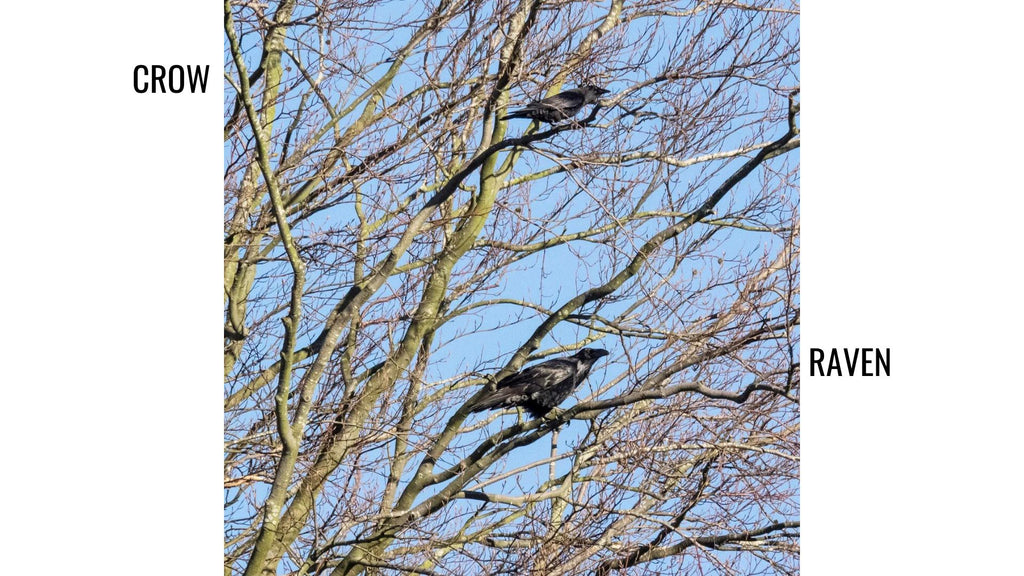
The General Appearance of Ravens
A raven's feet resemble those of raptors, and their beaks are more pronounced with noticeable feathers over them. A raven's chest feathers are thick and prominent, resembling the fine cravat of an English gentleman. Additionally, their 'eyebrow' feathers can stick up, giving them a wildly expressive appearance.

In flight, the easiest way to tell them apart is by their tails; ravens have wedge-shaped tails that come to a point, while crows have flat, fan-shaped tails.
There are also differences in the number of pinion feathers, which is harder to notice in a flying bird.

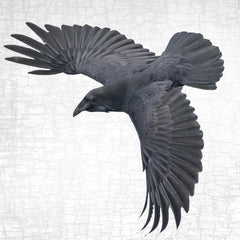

The Sounds of Ravens
Ravens make a wide variety of sounds. They make a croaking sound and other unique noises, like water dropping in a Japanese temple garden or a hollow bamboo tube being tapped. They also chatter among themselves.
While crows also have various sounds, ravens seem to have a broader range of vocalizations. The common raven also has a unique, hollow call that has an almost haunting feeling.
Whereas crows have, among other sounds, a sharp caw that most city dwellers recognize. In general, the sounds crows make are higher pitched, while ravens tend to make throaty, croaking vocalizations.
Tail Feathers
The tail feathers of crows and ravens are distinct in shape. Crows have fan-shaped tails with relatively even-length feathers.
The raven tails are more diamond-shaped, coming to a point. Ravens also have considerably bigger feathers.
Feathers
As previously mentioned, the shape and structure of their feathers, especially on their tails, differentiate these black birds.
At first glance both crow and raven feathers appear to be simply black — but, inf fact, those seemingly monochrome feathers reflect all kinds of other colours depending on how the light strikes them.

Crow feathers in sunshine

Raven feathers in sunshine
Both crows and ravens undergo a moulting process in late summer when they lose their worn feathers to grow shiny new ones in time for the coming winter weather.
Wings
Raven wings are longer and thinner relative to their body. Raven wings are more pointed than crows, suited for soaring and gliding, particularly in open landscapes or mountainous terrain. Crows have blunt and splayed wings that are shorter and rounder, better suited for maneuvering through dense foliage and urban environments.
Ravens are the more robust of the two. They sport a wingspan that can reach up to 4.5 feet. On the flip side, crows are a bit smaller, reaching only about 17.5 inches in length. Their wingspan typically measures around 2.5 feet, which, while still impressive, falls short compared to ravens.
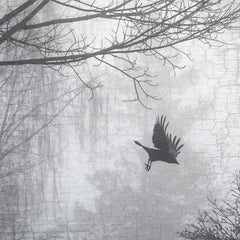
Feet
A raven's feet resemble those of raptors. Raven feet are larger and stronger than crow feet, with longer, sharper talons suited for handling larger prey and rugged terrain. Ravens use their robust feet for grasping and tearing food, while crows have smaller, more nimble feet adapted for varied foraging tasks, including in urban environments.

Raven's foot
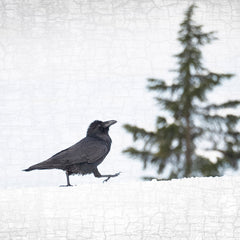
Ravens in Flight
Ravens enjoy soaring and performing aerial maneuvers, using wind currents along cliffs and high places. They can glide for longer periods compared to crows. Crows tend to flap more and engage a little less in wind play.

When observing ravens flying in the city, you might see a pair gliding together. Sometimes, they engage in playful aerial acrobatics, such as tumbling or flying upside down before righting themselves. Ravens are particularly graceful in flight, and their large size makes their aerial maneuvers more noticeable and impressive. You can often hear the air displaced by their large wings.
 A raven soars in the forest.
A raven soars in the forest.
Beaks
Ravens tend to have a heavier and more curved beak compared to crows, though this can be misleading as some crows also have curved beaks. Both crows and ravens have bristles at the base of their beaks, but the raven's are more emphatic.
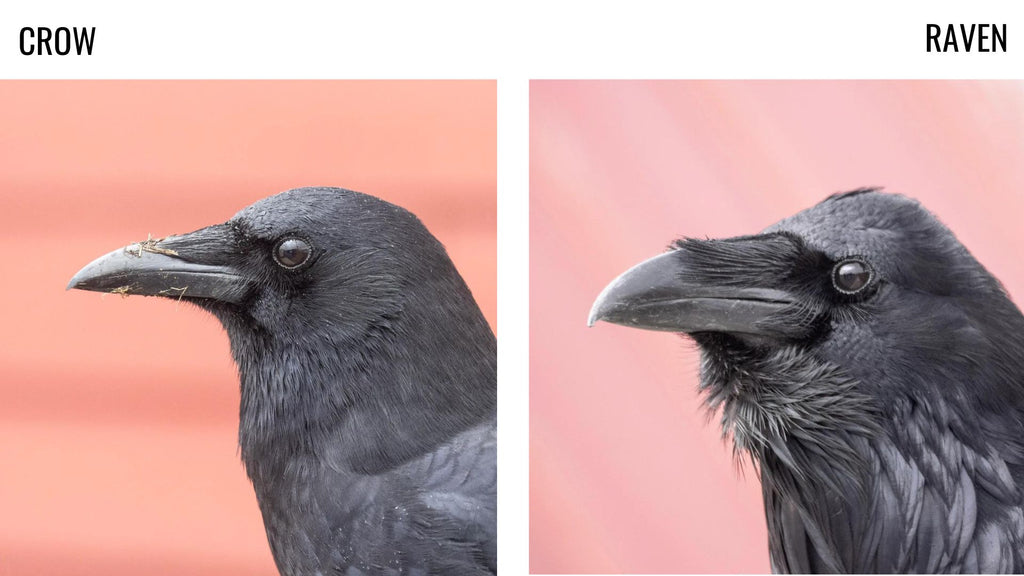
Intelligence
In terms of intelligence, research suggests that ravens might be slightly smarter than crows. However, certain crow species, like the Caledonian crow, are known for their tool-using abilities, which demonstrate high intelligence.
Who Is Friendlier? Crows or Ravens?
A raven's friendliness depends on their environment and experiences with humans. Both crows and ravens have been known to make friends with humans who offer them food.
Generally, ravens in rural areas don't associate people with food and are less likely to approach humans. However, urban ravens, like those at the Tower of London, are more accustomed to humans and can be quite bold, interacting with tourists for food.
Similarly, ravens have learned to approach humans for unattended food in popular tourist spots in Vancouver. There are also instances where ravens in remote areas, such as the Yukon, become familiar with certain truck drivers and follow their vehicles, expecting food.
Both ravens and crows can be friendly if they see a benefit, but ravens are generally more independent and focused on natural food sources than crows.

Raven vs Crow Territories, Behaviour, and Habitat
Ravens generally have larger territorial areas and pair territories, unlike crows, which gather at large communal roosts nightly.
Ravens don't typically roost in large groups, but they do gather in significant numbers when there's a substantial food source. For example, ravens may gather around a large animal carcass in the wilderness. While in urban areas where food is readily available, such as a ski hill during busy times, you may find ravens congregating. Ravens communicate with each other about these food sources, often gathering in large numbers to get in on the food feast.
Urban Sophisticates
Crows are urban sophisticates. Adaptable and intelligent, they thrive in cities and suburbs. Crows have mastered city living—from garbage bin feasts to nesting on telephone poles, they have turned our concrete jungles into their personal playgrounds.

Wild at Heart
Ravens, on the other hand, are the recluses of the Corvid family. Preferring solitude, they gravitate towards forests, mountains, and deserts, avoiding human interaction for the most part. Their soaring flight patterns indicate their love for wide, open spaces.
Crows are much more adaptable and comfortable in human-dominated areas. Ravens, conversely, are more likely to be found in wilder, less populated spaces.

Ravens Never Inhabit Cities...Or Do They?
There's a misconception that ravens never inhabit cities. In fact, ravens do venture into urban areas, especially near natural habitats.
In Vancouver, ravens have been known to nest in high places like at the top of Queen Elizabeth Park and along the SkyTrain at Grandview. They prefer high places to build their nests, such as under bridges or on structures in parks.

A raven in the city. Two crows sit nearby.
Social Life
Crows are the life of the party, often seen in large numbers called flocks. Ravens, however, are typically spotted in pairs or sometimes in groups of three or four rather than large groups. Ravens don't go off to roost at night like crows do, either.
Spotting Crows and Ravens
If you're in an urban or suburban area, look out for crows. They're often seen in parks, gardens, and even bustling city centres. Ravens, however, are more likely to be spotted in wilderness parks, high atop cliffs or soaring above treetops in forested areas.
So the next time you're out and about, keep an eye out for these birds. You'll be amazed at where you might spot them!
The social life of ravens.
The Up-Down Relationship Between Crows and Ravens
Ravens Eating Baby Crows
If you do see ravens in the city, the next thing you'll probably see is a crowd of crows mobbing it. Ravens and crows are related but sometimes have a tense relationship because ravens prey on crow fledglings and eggs. In cities, crows often harass ravens. Ravens, like hawks or owls, are on the crows' "naughty list."
Ravens and Crows Working with Wolves
There are theories and observations suggesting that crows and ravens can have a symbiotic relationship with predators like wolves. Ravens may alert wolves to wounded animals like caribou, which could be potential prey. In turn, this benefits the ravens as they can feed on the remains left by the wolves. Videos have captured crows and ravens living in close proximity to wolves, sometimes even interacting playfully, indicating their understanding of the mutual benefits of this relationship.
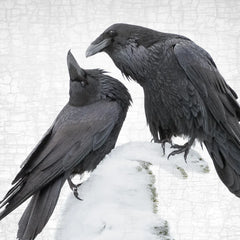
Crow Eggs vs Raven Eggs
Crow and raven eggs have several distinguishing features:
- Size: Raven eggs are generally larger than crow eggs. A raven's egg typically measures around 4.5 to 5 cm (1.8 to 2.0 inches), while a crow's egg is usually about 3.6 to 4.6 cm (1.4 to 1.8 inches) long.
- Colour: Both crow and raven eggs can vary in colour, but there are some common patterns. Crow eggs tend to be pale blue-green to olive green, marked with brown, gray, or even purple. Raven eggs, on the other hand, are often greenish or bluish with brown and sometimes lavender markings.
- Texture and Shape: The surface of raven eggs is generally smoother and shinier than crow eggs. Also, raven eggs are typically more oval or elongated, whereas crow eggs can be a bit more rounded.
- Clutch Size: The number of eggs in a clutch can also be a clue. Crows usually lay 3-7 eggs per clutch, while ravens typically lay 3-6.
These characteristics can help differentiate between crow and raven eggs, although variations can occur within species.
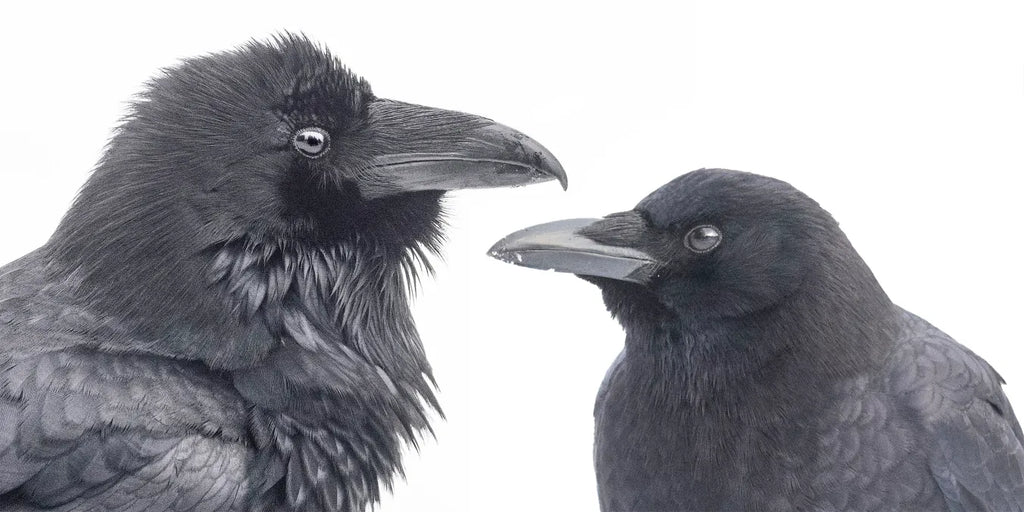
Common Questions about Ravens and Crows
-
How can you tell the difference between a crow and a raven if you're close to them? Close up, you can distinguish a raven from a crow by its heavier beak and shaggier throat feathers, unlike the crow's slimmer beak and smoother feathers.
-
What about if you're far away? From afar, differentiate a raven from a crow by the tail shape; ravens have wedge-shaped tails, while crows have fan-shaped tails.
-
Is a raven bigger than a crow? Yes, a raven is bigger than a crow, with a more robust body and larger wingspan.
-
Are ravens a type of crow? Ravens are not a type of crow; they are distinct species within the same corvid family.
-
What are the other birds in the corvid family? Other birds in the corvid family include jays, magpies, and nutcrackers.
-
Who is smarter—ravens or crows? Intelligence varies, but generally, ravens are considered slightly smarter than crows.
-
How can you tell a crow from a grackle? A crow can be distinguished from a grackle by its larger size and heavier bill compared to the slimmer and longer grackle.
-
What is the difference between a crow, a raven, and a grackle? Differences include size (ravens are largest, grackles smallest), tail shape (ravens have wedge-shaped tails, crows and grackles have fan-shaped), and vocalizations.
-
What is the difference between ravens, crows, and blackbirds? Ravens and crows are larger than blackbirds, with different tail shapes and vocalizations; blackbirds are smaller and belong to a different family.
-
Are grackles and crows and ravens related? Grackles, crows, and ravens are all part of the order Passeriformes but belong to different families. Crows and ravens are part of the Corvidae family, while grackles belong to the Icteridae family. The order Passeriformes includes half of all bird species.
-
Where do ravens live? Ravens live in varied habitats, including forests, mountains, tundra, and some urban areas.
-
Are a crow and a raven the same bird? A crow and a raven are not the same bird; they are distinct species with different physical and behavioural characteristics.
-
What does seeing a raven mean? Seeing a raven may have various cultural interpretations, often symbolizing wisdom.
-
Is there a difference between a crow and a blackbird? Yes, there is a difference between crows and blackbirds. Crows are larger, belong to the Corvidae family, and have distinct calls compared to blackbirds. Blackbirds belong to the Icteridae family.
-
Do blackbirds look like crows? Blackbirds do not look like crows; they are smaller and have different body proportions and beak shapes.
-
Do crows and grackles get along? Crows and grackles may coexist but do not necessarily 'get along,' often competing for food and habitat.
-
Are ravens rare in Canada? Ravens are not rare in Canada; they are widespread in many regions, particularly up north and in the Pacific Northwest.
- Where do ravens live in the US? In the US, ravens live in various habitats, including deserts, mountains, forests, and coastal regions.

Check Out June Hunter's Beautiful Fine Art Prints
Check out June Hunter’s collection of crow, raven, garden bird and blue botanical prints which will add a vibrant touch of nature to your home.

Read More:
How to Make Friends with Crows
Gifts for Bird Watchers & Bird Lovers
The Mystery of Crows with White Feathers
Baby Crows: Everything You Need to Know about Corvid Fledglings
Swarm of Crows: Causes, Meaning, History and Mystery
Explore June Hunter's Gift Shop
This article was written by Colette Nichol based on an interview with crow and raven photographer and nature enthusiast June Hunter. Our aim with these articles is to bring interesting bird facts, nature-inspired home décor info, and framing tips to more online readers while also highlighting June Hunter's photography and designs. To read June Hunter's popular blog the Urban Nature Enthusiast, where she shares stories about crows and ravens, please click HERE.

